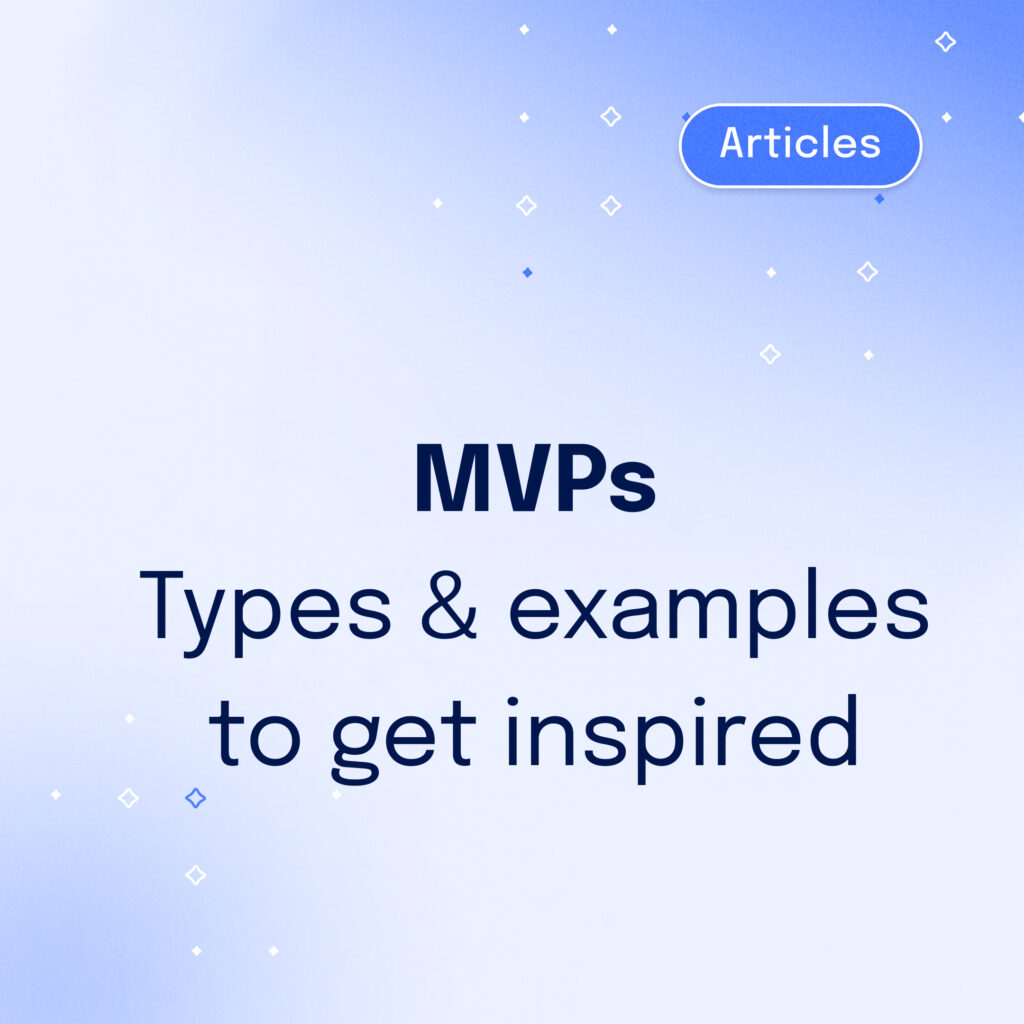MVP, the first and most basic version of a product idea.
Have you ever found yourself smiling at a silly idea you just had thinking “shut up and take my money”, but then immediately think “nah, not one person on earth will be into this”? If that is the case, you might be a little bit of a self-saboteur and there is only one way to prove you wrong: Validating your idea.
The whole point of validating is to ensure your product or business idea can potentially work in the market. The goal is finding out as soon and cheap as possible if the concept and its basic features can awaken interest in our idea’s target audience. Here is when the MVP or minimum viable product starts to sound like the perfect tool to complete this task.
What is an MVP or minimum viable product?
Eric Ries, first mentioned the concept of the MVP (minimum viable product) as part of his book “Lean Startup”. He describes an MVP like “the version of a new product that allows a team to collect the maximum amount of validated learning about customers with the least amount of effort”. Basically, it is like an ideas testing tool, a means to validate a few features of an idea or concept.
This might take many forms, creating an MVP does not mean to start building, but start testing our concept. If you are trying to create a huge digital product with lots of functions and solutions for the user, you can start by testing the main concept in different formats. Such as a basic mobile application with a few features to test usability and engagement, or just a website sharing the problem/solution this idea is about.
4 MVP types to help you validate fast
Product Design
One of the easiest ways to get to an MVP. It can be digital or just on paper and guided usability tests. Of course there are more professional ways to do it like creating wireframes that can test things like user experience, information hierarchy or navigation and also you can create a mockup that can demonstrate exactly how a product will work.
Demo Video
Less interaction, more storytelling. A demo video can help you explain what your product can do for users. It’s important to share this video with the target audience, focusing on the problem identified and the possible solution you thought of. It’s key to choose just a few features to share with your audience, but also to pay deep attention to their feedback since that is going to be a very important input on how to improve your product.
Landing Page or Microsite
A landing page is where users will arrive after clicking on a link a brand shares on any media. It can be a single page with its own domain, a page within a microsite that is usually built around a single, short-term communication campaign, or even a page that is part of a bigger site or platform. This can help you explain in a bit more interactive way what your idea is about and measure the audience’s reaction to it. You can even ask users to submit their email address for updates or release notifications.
Software Prototypes
The most complex yet common MVP type. We say complex since it requires building software, but don’t get so stressed yet, development must contemplate just the core features. There are different ways to get there.
A no-code tool could help you get a basic prototype that allows you to validate the concept and some main functions. You could also start a product development process and the benefit of this is mainly the scalability of the final product. This process usually applies a scrum framework for development and involves discovery through collaboration and continuous improvement of our product.
Some MVP examples to get inspired
Back in 2004, Facebook was called “The Facebook” and it was a basic social media tool to connect with people from Harvard (at first it was only available for people with a Harvard email address) and later on, other universities. Profiles were as basic as could be and the idea proved to be popular enough to be worth expanding. It gradually added more complex features and audience reach.
Amazon
The man who now travels to space, Jeff Bezos had many ideas in the early 1990s but decided to focus on an online bookstore as a first marketplace attempt. From 20 different options of things people could sell or buy, he went down to five products like videos, books, software, computers, and even compact discs, to later decide on just books.
We all know that it took a few turns down the road that led Amazon to be one of the biggest companies in the world.
Minimum Viable Product Conclusions
Test an idea with real users before spending a large budget to the product’s full development. This will definitely leave some learnings on what matters to the company’s target market and what doesn’t.
As Clara Lopez Basavilbaso, our Head of Business Development once (wisely) said, “this way, we’ll end up having a product, that at the end of the road, is everything that our users want and need, with the smallest investment possible.”
____________________________________________________________________
If you have an idea or are working on a project you could use some help with, feel free to contact us! We’d be happy to help you… or who knows? Maybe be your new partner in crime.
You enjoyed this post and want to read more?
